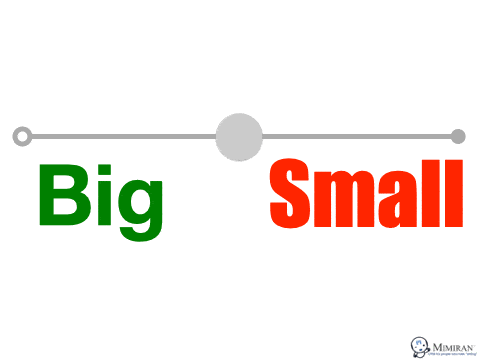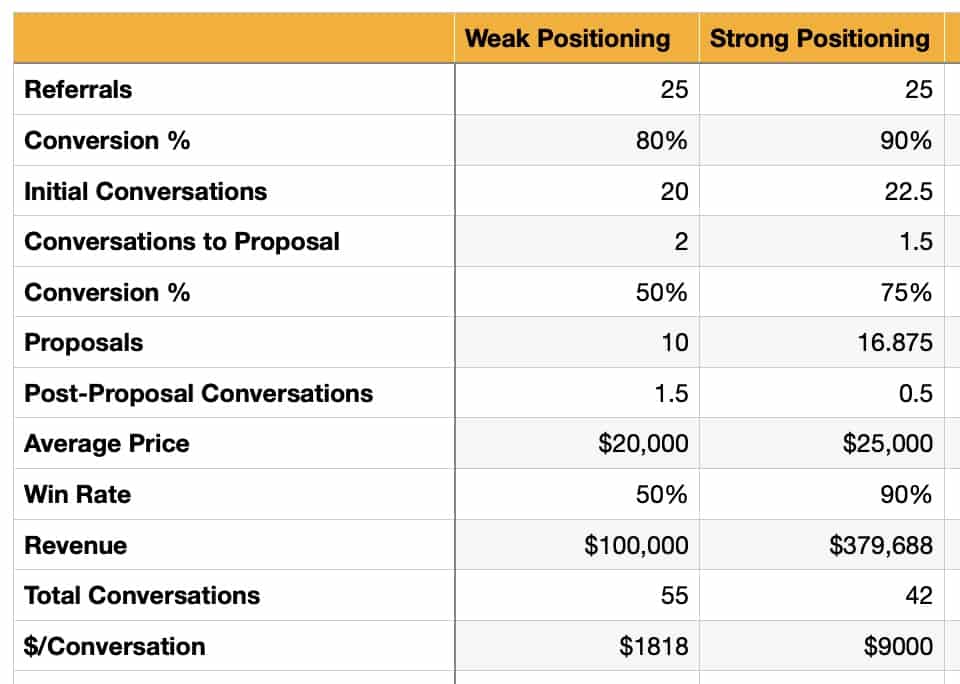As a consultant, nailing your niche is hard, but consulting positioning math can make it easier.
I think we’re wired by evolution to fear “scarcity”, even when it’s not “rational” for us to do so. We seem to hate niching down, when that’s exactly what we should be doing.
The way to get around evolution is not to think about “large vs small” markets, but about “easy vs hard”. Do we want our sales and marketing efforts to be easier? Or harder?

Me, I like “easy”. (I’ve spent too long doing things the hard way, especially when it comes to sales and marketing.)
What are the easiest sales? The ones that don’t even feel like sales. When a past client calls you and says, “I’d like to do another project.” Or you get a perfect referral. Everything flows easily. Prospects don’t fuss over your rates, they are eager to get started, etc.
What about the hard sales? When someone isn’t quite the right fit. You have to spend more time and energy nurturing them, addressing their concerns, arguing over price, etc. Fewer of these folks become clients, which is good, because “winning” the business is often the worst case scenario.
Now let’s look at 2 hypothetical scenarios. What happens if we have weak positioning vs strong positioning?
People often think that getting tighter with positioning will reduce the number of referrals, but you’ll actually not only get better referrals, you’ll get more of them. But for now, let’s assume for now that we get the same number of referrals in each scenario.
How many of those referrals lead to conversations? How many conversations do we need to get to a proposal? What percentage of opportunities turn into proposals? How many conversations do we need after sending the proposal to address concerns? How much revenue do we get per proposal? And how many do we win?
What do these scenarios tell us?

Not only do we get far more revenue with tighter positioning, we do it with fewer conversations. The $/Conversation figure tells the story.
In other words, we’re spending time with the right people, who want our help, instead of trying to convince people that they need our help.
I’ll take easier, please.
(If you want a copy of the spreadsheet to play with the numbers yourself, just let me know. And you can join the conversation on LinkedIn.)
And use your positioning to do a lot of the heavy lifting for you– consulting positioning math doesn’t lie.
